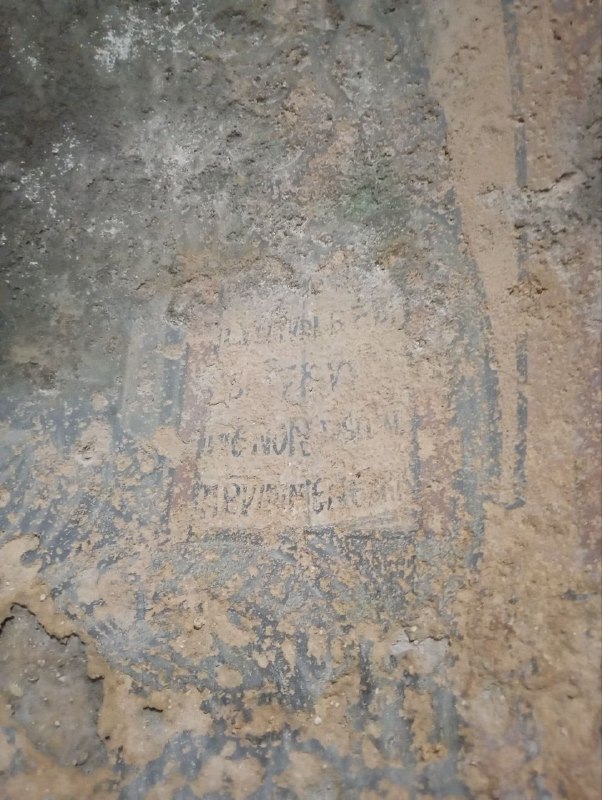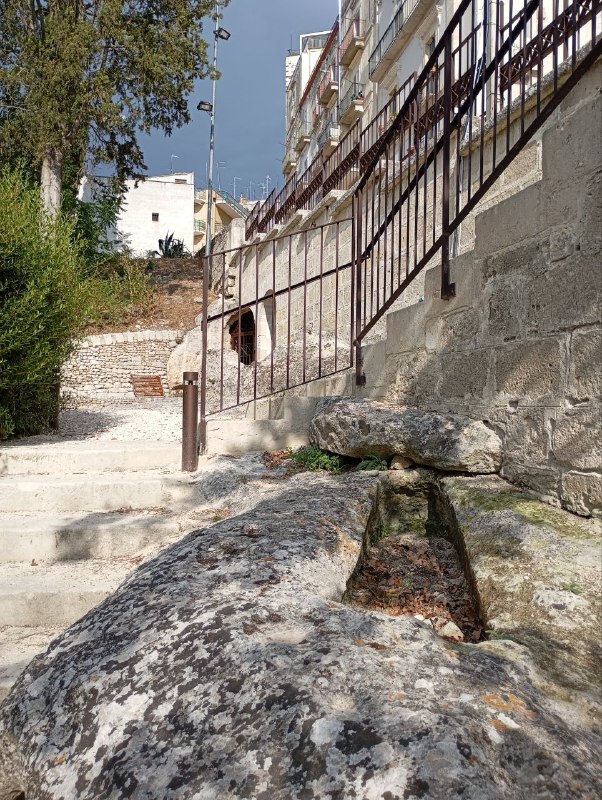RUPESTRIAN CHURCH SANTA MARIA DEGLI ANGELI (ST MARY OF THE ANGELS) (VII - IX sec)
The rock church of Santa Maria degli Angeli, also known as the Church of the Sepulchre due to the presence of numerous medieval tombs both inside and outside, is one of the most fascinating sites of the Gravina. This small church, entirely carved into the steep rocky wall of the ravine, has a three-nave layout, divided by three pillars, each ending in an apse. The overall appearance is simple and bare, with no remaining floor or plaster. The interior is strongly affected by the humidity typical of limestone caves, which has contributed to the deterioration of the original frescoes. Despite this, some evocative details are still visible, such as the face of a saint, located high on the first pillar to the left. Other fresco fragments, probably dating back to the 16th century, can be seen in the right nave, between the presbytery area and the only tomb on the right side, depicting a crucified Christ.
To the left of the entrance there is a cistern and another pit, likely used as an ossuary, while along the walls traces of stone benches carved into the rock can still be seen. The presbytery, slightly raised and marked by an iconostasis, preserves at its center the plinth of the altar—an element quite rare among the rock churches of this area. Particularly significant is the altar table preserved in the central apse: it was used for the distribution of the Eucharist to the faithful and probably dates back to between the 8th and 9th centuries, making it a valuable example of rock sacred architecture and an important historical and artistic heritage. In the central apse, remnants of a fresco depicting the blessing Christ Pantocrator are still visible, while in the right apse, carvings of three Greek crosses can still be distinguished, clear evidence of the Orthodox worship once practiced in this church.


According to Bertaux, the presence of Basilian art in these areas was the result of the migration of Eastern monks who arrived in Southern Italy from Syria, Egypt, and Cappadocia, during a migration wave that occurred between the 10th and 11th centuries (according to the estimates mentioned, the first wave likely took place during the 9th century, touching Calabria and Terra d’Otranto). These monks inhabited and decorated the cliffs of Southeastern Southern Italy. Upon arriving in Italy, they moved north from Terra d’Otranto towards Taranto and Matera, finally reaching Gravina, where they found cliffs of various characteristics already riddled with cells. Santa Maria degli Angeli was one of the sites where the monks settled to express their pictorial art, thus reviving the traditions of the hermits from Syria and Asia Minor, while adapting to the customs of the lands they colonized. We know nothing about the culture that existed in the Apulian cliffs before the arrival of these Eastern monks.
